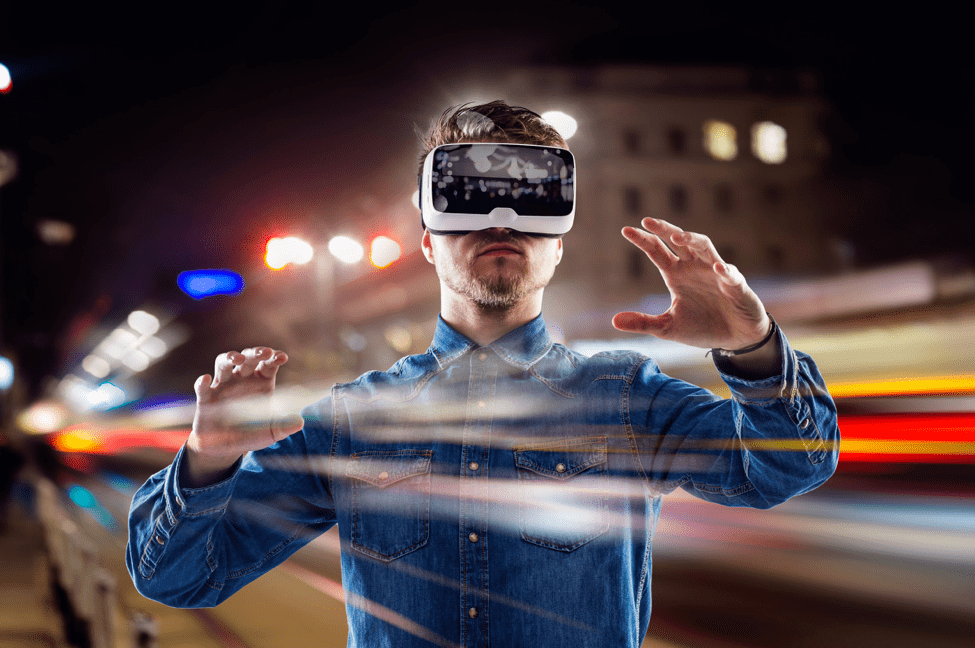
It has been more than four weeks since the “FOR SALE” sign has been up on a house I drive by on my way to work. The house is in a well-known suburb within the western region of the Greater Toronto Area (GTA) where properties have been sold rather quickly in the past. It is priced on par with current market rates and does not suffer from any defects or design flaws. So why has it not been sold yet?
Certainly, there are indications of a cooling trend in the Canadian real-estate market, but they are nowhere near alarming. This got me thinking whether there is something more at play than just a “downturn”. Real-estate is uniquely positioned because although it is consumer-driven, it constitutes a vital, highly expensive, and life-changing transaction. However, a paradigm shift in consumer trends to abandon bricks-and-mortar retail in favour of online shopping, as well as the onset of digital transformation, may also shed some light on a growing expectation not only for convenient and instantaneous access to rich and personalized information but also to land a “better deal” than in the past.
Ultimately, can digital transformation of real-estate help current professionals and organizations differentiate themselves from the competition in these times of change?
Why real-estate needs digital transformation?
According to analysts, the salability of a property heavily depends on its Days on Market (DOM) index. Factors – such as seasonal variability, condition of the property, whether it was staged to sell, buyer’s availability to see a property, as well as seller’s lead time to allow in-person showing – can have a significant impact on DOM.

Immersive technologies such as Augmented and Virtual Realities (AR/VR) can drastically improve this index by providing convenience and enhanced experiences to buyers, agents and sellers alike, and making way for digital transformation. AR/VR can save considerable time and expenditure not only for potential renters or buyers, but also for sellers and realtors during times of potential downturn where buyer-to-seller and buyer-to-agent ratios drop significantly. Thanks to immersive tech like AR, MR, and VR, potential buyers can soon be able to move freely in their future residence or office virtually, just by putting on a VR headset or by watching an AR representation of it on their smartphones or tablets. And perhaps this technology that combines VR and AR might just be the key to harnessing immediate success in the real-estate market in today’s highly volatile environment.
What are immersive technologies?
Since its inception by Laurence Manning in his late 1930’s science fiction stories, VR (and its close cousin AR) has only recently gained massive popularity. Technological progress and digital transformation has allowed the improvement of immersive User Experiences (UX) and reduction in costs, thus favouring their democratization – but the UX for AR and VR can be considerably different.
VR is a three-dimensional, computer- generated environment which can be explored and interacted with by a user. A range of devices (e.g. headsets) can be used to stimulate vision, hearing, and touch in order to create the illusion of a virtual reality that is created using a computer. AR, on the other hand, is an enhanced version of reality to add digital information on top of a captured image or video. AR is typically available in mobile apps that use a smartphone camera to capture videos of the real world, and then superimpose a layer of information on it, including text, images, and virtual 3D objects. But recent advancements have been able to combine the characteristics of VR and AR to give rise to immersive Mixed Reality (MR) experiences such as those possible with the Microsoft Hololens.
How does VR or AR concretely fit into the digital transformation of the process of sale or leasing of residential or commercial real-estate? The experience for potential clients wanting to visit a property could be of two types: Either remotely (by visiting the real-estate broker’s website,) or in-person with or without a real-estate professional to guide these virtual tours. To simplify the visit process, visitation developers can leverage AR and VR experiences by capturing 360 Videos of a property being offered, as well as creating its virtual model at a small fraction of the cost of physical staging and refinishing. Such modeled spaces can then be imported onto 2D media for AR experiences or presented as VR content using virtual headsets.
Enhanced customer experience through virtual visits and staging
90% of households today begin their real estate search on the Internet, with more than 50% of searches made on mobile devices. To enhance the user experience on the realtor’s website, a virtual presence of the property through VR and AR can highlight Points of Interest (POIs) that allow potential buyers a better understanding of the property. However, unproductive physical visits despite appealing POIs can result in the added cost of sale if buyers are unable to correlate their “imagined” property compared to how it really looks in real life.
While these technologies cannot offer the guarantees of a sale, they can undoubtedly allow customers to refine their search. This reduces the number of unproductive visits to the benefit of generating and following more serious leads by realtors. Customers can also make more educated selections from a realtor website using technologies that create immersive experiences, as they provide a spatially richer experience than mere photos or videos. Potential buyers can then decide much more easily whether specific properties are “worth the visit” for them.
Analysis has shown that around 50% of potential buyers can request on-demand (or same day) access to a property for viewing in a “buyer’s market”. While some mobile apps today have enabled on-demand availability of real-estate professionals, the actual viewing availability of the property can drastically impact the potential sale. By leveraging immersive technologies, realtors could at least generate interest for a deferred visit by offering an instant VR experience without the need for immediate physical access to the property. This also benefits real estate professionals, who will no longer be required to organize visits just to generate interest in a property. Instead, they can offer potential buyers with an immersive virtual experience of the property visit.
Furthermore, market trends in some areas in the last five years suggest that 1% to 3% of investment in home staging can bring an 8% to 10% increase in sale price for a residential property. This means that for staging a typical property (e.g. a residence in a suburb of Toronto, Canada) valued at $800,000 CAD, an upfront staging cost of up to $24,000 CAD may be incurred in some cases. And there is an inherent risk of the staging not being on par with the buyer’s expectation or tastes. Such upfront costs could be eliminated (or reduced to a fraction) by the use of virtual remodelling and staging of a given property until the buyer interest can be assessed. Potential savings could also be passed onto buyers where little to no physical staging being required, and this may incentivize them just enough to close the deal.
In fact, builders and realtors will need to start leveraging storytelling techniques to communicate “the art of possible” during virtual and in-person showings with these technologies. Storytelling can allow seasoned stagers or graphic artists to work remotely with realtors to virtually “stage” a property based on potential client feedback in real-time, which may further help in making the sale.

For instance, potential buyers looking for a “fixer-upper” may wish to visualize the property with the appropriate refinishing. Those looking to purchase a new home based on a design by the builder may want to visualize the finished home through a 3D immersive experience. And those adamant on specific looks of the property – for instance, wanting a wooden floor with oak finish instead of porcelain tiles currently offered with the “base model” – could gain enough confidence to make the purchase with the upgrade. Similar experiences can be offered using virtual staging objects, such as curtains, furniture, and lighting to facilitate purchases from partnering hardware and upholstery providers.
Better analytics to drive decision support
Analytics is also an important aspect of using immersive technologies since they allow realtors to gauge the client’s interest in a property, as well as that of the personalized experience. Popular analytics providers are able to offer some web-page related KPIs, such as pageviews, sessions, and exits. However, these technologies and experiences can provide realtors with deeper insight into specific aspects or features that are requested by potential buyers. For instance, a customer requests to see what a living room might look like with maple hardwood floor along with crown molding on ceilings can be captured digitally and provide useful data for prediction and next best actions.
Analytics from within VR and AR environments could also shed direct insight into nuanced buyer behaviors. For instance, the mere fact that buyers spend more time viewing a particular property within the virtual tour could indicate their interest in this and similar properties. The time spent within specific virtual sections could indicate potential problems with the property that need to be resolved in order to make a sale. This data, however, can be segmented not only at the demographic level, but also from geographic, seasonal, and behavioural points of view to better drive decision-making.
Putting it together
VR and AR technologies can help realtors make a stellar first impression on both homebuyers and sellers. These technologies can solve common communication and timing challenges with the prospects and lead to a digital transformation in the field of real estate. As we observed, VR and AR can help realtors and support professionals spend their time effectively and efficiently allowing targeted and personalized experiences. They can also substantially reduce unneeded staging and scheduling expenditures, and opportunity costs due to unproductive showings which can be directly passed to the consumer, thereby incentivising them to close. By helping customers visualize what is possible through VR or AR, eliminating non-productive viewings, and reducing overall costs of preparing a property for sale, the real-estate industry has a real opportunity to revitalise itself using immersive technologies and digital transformation.
While some software companies have started exploring this market, adoption of their solutions and products are not mainstream yet. However, we believe in the next 3-7 years, AR and VR experiences will change our lives in the same way that the web has done in the last 3 decades. And the time is now for real-estate stakeholders to give serious thought to these technologies. In order to stand out from the competition and better meet the expectations of buyers, current market players will have to adapt quickly. Investment in the adoption of 3D modelling, VR demonstration, and AR staging tools is therefore of tremendous value for builders, real estate agencies, and sellers alike. However, the end prize just might go to those who take the first step and differentiate themselves by transforming their digital engagement and experience.



